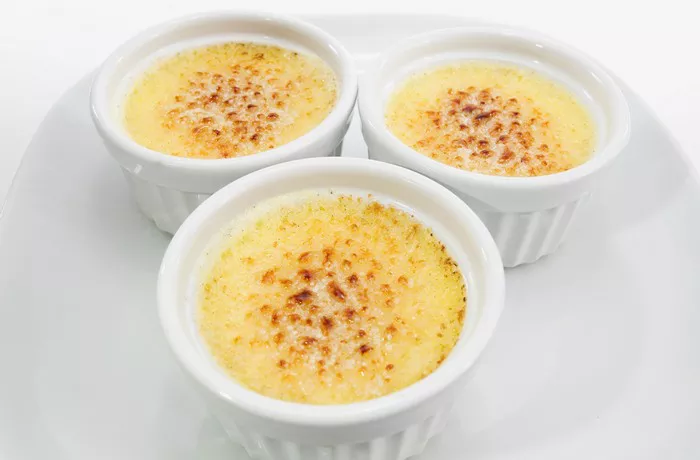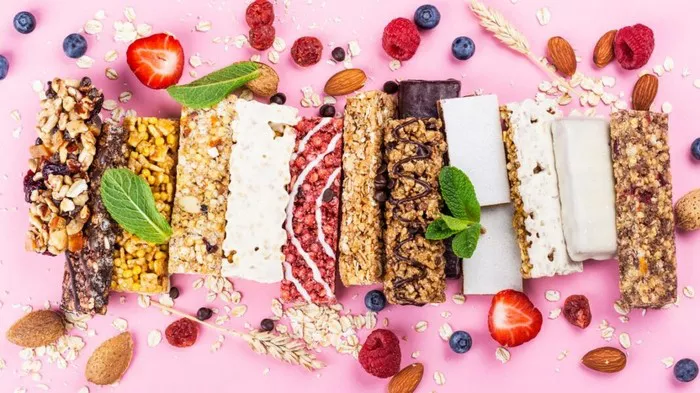Custard is a rich and creamy dessert that many people love. It can be enjoyed on its own, used in pastries, or served with other desserts. Making custard may seem intimidating, but it’s a straightforward process. In this article, we will explore how custard is made, the different types, and tips for achieving the perfect consistency.
What Is Custard?
Custard is a mixture of milk or cream and egg yolks. It can be thick or thin, depending on how it is made. The main components of custard are:
Eggs: They provide richness and help thicken the custard.
Milk or Cream: These give custard its smooth and creamy texture.
Sugar: It adds sweetness.
Flavorings: These can include vanilla, chocolate, or fruit.
There are many types of custard, including pastry cream, crème brûlée, and flan. Each type has its unique characteristics, but the basic process of making custard remains the same.
Types of Custard
1. Baked Custard
Baked custard is set in the oven. It is typically firmer and can be sliced. Examples include:
Crème brûlée: A rich custard topped with caramelized sugar.
Flan: A smooth custard topped with a sweet caramel sauce.
2. Stirred Custard
Stirred custard is cooked on the stovetop. It is often used for pouring over desserts. Examples include:
Vanilla custard sauce: Perfect for drizzling over pies or cakes.
Pastry cream: Used as a filling in pastries.
3. Cold Custard
Cold custard is typically made with whipped cream. It has a lighter texture and is often used in desserts like trifles.
Ingredients Needed for Custard
To make custard, you need the following ingredients:
1. Milk or Cream
You can use whole milk, half-and-half, or heavy cream. Whole milk creates a lighter custard, while heavy cream results in a richer, denser custard.
2. Eggs
Use large eggs for the best results. The yolks are essential for thickening the custard.
3. Sugar
Granulated sugar is most commonly used, but you can experiment with brown sugar or other sweeteners for different flavors.
4. Flavorings
Vanilla extract is the most popular flavoring. However, you can also use other extracts or infuse the milk with spices, such as cinnamon or nutmeg.
Equipment Needed
1. Mixing Bowl
A large mixing bowl is necessary for combining your ingredients.
2. Whisk
A whisk helps blend the eggs and sugar smoothly.
3. Saucepan
A heavy-bottomed saucepan is ideal for cooking custard evenly.
4. Fine Mesh Strainer
This tool is used to strain the custard mixture for a smoother texture.
5. Baking Dish (for baked custards)
If you are making baked custard, you will need a suitable baking dish.
6. Thermometer (optional)
A kitchen thermometer can help monitor the temperature to prevent the custard from curdling.
How to Make Custard: Step-by-Step Guide
Now, let’s dive into the step-by-step process of making custard. This method is for a basic stirred custard.
Step 1: Gather Ingredients
Before starting, make sure you have all your ingredients and equipment ready. This will make the process smoother.
Step 2: Combine the Ingredients
In a mixing bowl, whisk together the following:
- 4 large egg yolks
- 1/2 cup granulated sugar
- 2 cups milk or cream
- 1 teaspoon vanilla extract
Mix until well combined. The egg yolks should be fully blended with the sugar.
Step 3: Heat the Milk
In a saucepan, heat the milk or cream over medium heat. You want it to be hot but not boiling. Stir occasionally to prevent it from scorching.
Tip: Watch for small bubbles around the edges of the pan. This indicates that the milk is ready.
Step 4: Temper the Eggs
This step is crucial to prevent the eggs from cooking too quickly. Slowly add a small amount of the hot milk to the egg mixture while whisking constantly. This gradually raises the temperature of the eggs.
- Add about 1/4 cup of hot milk to the egg mixture.
- Whisk vigorously to combine.
Once combined, repeat the process by adding a little more hot milk. This will help bring the egg mixture up to temperature without scrambling the eggs.
Step 5: Combine Mixtures
After tempering, pour the egg mixture back into the saucepan with the remaining hot milk. Stir gently to combine.
Step 6: Cook the Custard
Return the saucepan to the heat. Cook over medium-low heat while stirring continuously. This helps prevent the custard from sticking to the bottom of the pan and burning.
Tip: Use a wooden spoon or a silicone spatula to stir. Make sure to scrape the bottom of the pan to avoid any lumps.
Step 7: Check for Thickness
The custard is ready when it thickens and coats the back of the spoon. To check, dip the spoon into the custard and run your finger along the back. If the line holds, it’s done.
Step 8: Strain the Custard
To achieve a smooth texture, strain the custard through a fine mesh strainer into a clean bowl. This will remove any lumps and ensure a silky finish.
Step 9: Cool the Custard
Let the custard cool slightly at room temperature. Then cover it with plastic wrap, pressing it directly onto the surface to prevent a skin from forming. Refrigerate until completely chilled.
Step 10: Serve and Enjoy
Once cooled, your custard is ready to be served! You can enjoy it plain, or use it as a base for other desserts.
Tips for Perfect Custard
Use Fresh Ingredients: Fresh eggs and dairy will yield the best flavor.
Avoid High Heat: Cooking at a low temperature prevents curdling.
Stir Constantly: This helps distribute heat evenly and prevents burning.
Experiment with Flavors: Try different extracts, citrus zest, or spices for unique tastes.
Use a Thermometer: If unsure, cook until the mixture reaches 170°F (77°C) to ensure safety.
Common Mistakes to Avoid
Cooking Too Fast: High heat can cause the custard to curdle.
Not Straining: Skipping the straining step can lead to a grainy texture.
Ignoring Temperature: Always monitor the temperature to prevent cooking the eggs too quickly.
Conclusion
Making custard is a simple yet rewarding process. With a few basic ingredients and some careful attention, you can create a delicious custard perfect for a variety of desserts. Whether you choose to enjoy it on its own or use it as a filling, the creamy texture and rich flavor will surely delight anyone who tries it. Happy cooking!
Related topics:



























